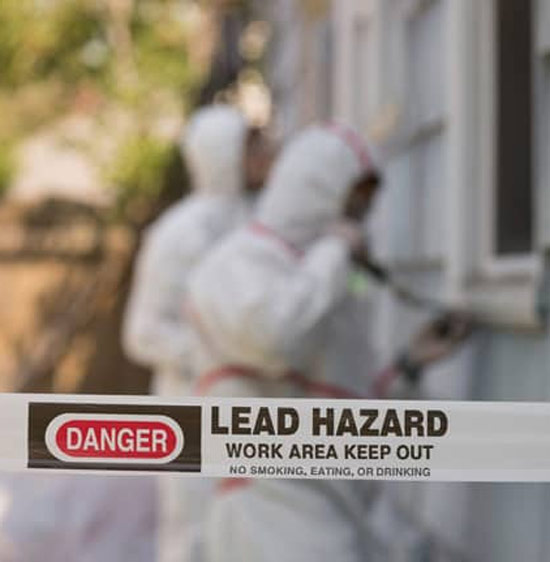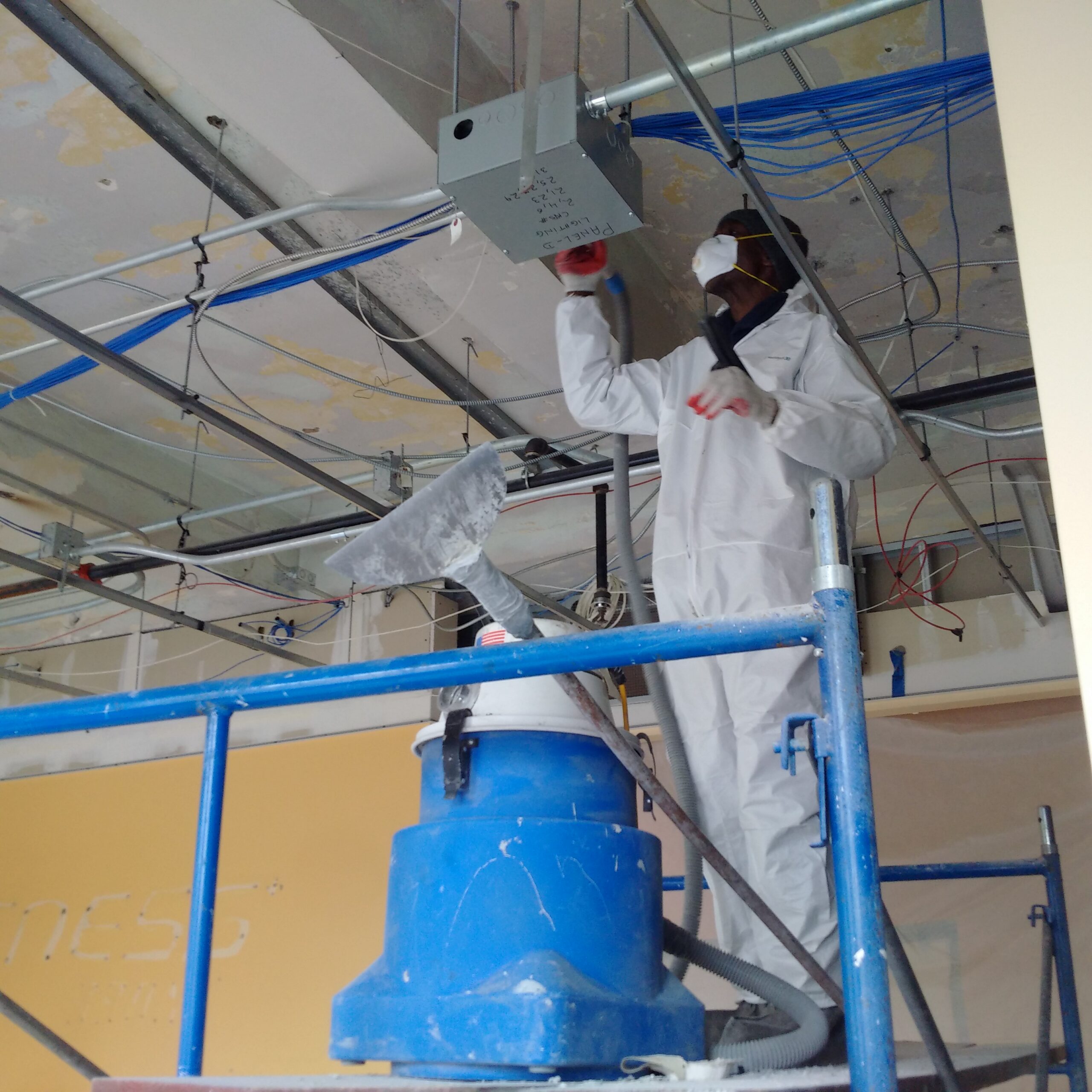Professional Lead Paint Removal Company-- Offering All NYC Boroughs
Professional Lead Paint Removal Company-- Offering All NYC Boroughs
Blog Article
Step-by-Step Process for Successful Lead Infraction Removal
Following this, adherence to federal and state policies is paramount to formulating a reliable remediation plan. The actual removal calls for knowledgeable personnel to implement these strategies while strictly following security procedures. What happens after the remediation is completed?

Discovery and Assessment
Discovery and evaluation are critical action in the removal of lead violations. To make sure an effective remediation procedure, it is necessary to conduct a detailed exam of the setting where prospective lead exposure exists. The first stage of discovery involves determining resources of lead contamination, which can be found in paint, pipes, dirt, and dust. Making use of advanced analysis tools such as X-ray fluorescence (XRF) analyzers and atomic absorption spectroscopy (AAS) can provide accurate dimensions of lead focus.
As soon as detection is completed, a detailed evaluation has to be taken on. This consists of examining the degree and severity of contamination, in addition to identifying populations at danger, particularly children and expectant ladies. Threat evaluations usually entail tasting and lab analysis, environmental studies, and health and wellness impact research studies. The collected information need to be thoroughly documented to support the growth of a reliable remediation approach (Lead Violation Removal in NYC).
Moreover, it is vital to prioritize locations with the highest possible levels of contamination and those that position the greatest health threats. Efficient communication with stakeholders, consisting of building owners, homeowners, and public health officials, is crucial for making sure that all events are informed regarding the searchings for and the succeeding actions required for removal. This first detection and analysis stage prepares for a successful lead infraction removal process.

Lawful and Regulatory Compliance
Browsing the landscape of lawful and governing conformity is an essential facet of successful lead offense remediation. Conformity makes certain not just the security of afflicted populaces however likewise the credibility and lawful standing of the organization liable for remediation.
State and neighborhood guidelines can vary, usually imposing extra obligations or even more strict criteria. A detailed understanding of all relevant legal structures is essential. This involves meticulous documentation of all removal activities to demonstrate conformity. Failing to abide by these guidelines can cause severe charges, including hefty fines, lawful activity, and reputational damages.
Engaging lawful specialists concentrated on environmental law can help with browsing these complexities. Routine training and accreditation for all workers involved in the removal procedure are likewise obligatory to guarantee adherence to safety and security and regulative criteria. By focusing on legal and governing compliance, organizations can successfully minimize dangers and accomplish a successful removal end result.
Preparation the Remediation
Properly preparing the removal of lead offenses begins with a thorough assessment of the infected site. This preliminary assessment must consist of an in-depth website investigation to recognize the level and focus of lead contamination. Comprehensive tasting and laboratory evaluation are paramount to create an accurate contamination profile. This data-driven approach ensures that remediation initiatives are suitably targeted and efficient. investigate this site
Once the contamination is mapped, a risk analysis need to be carried out to assess potential health dangers to human beings and the environment. Lead Violation Removal in NYC. This evaluation ought to take into consideration variables such as direct exposure pathways, populace vulnerability, and ecological effects. The insights collected will certainly create the basis for choosing a suitable remediation technique
Ultimately, setting clear, attainable objectives for the removal job is important. These goals ought to straighten with governing requirements and stakeholder assumptions to ensure conformity and community acceptance. Establishing a comprehensive removal strategy that describes methods, timelines, and resource allotment will certainly help with a structured method to the clean-up procedure.
In addition, it is vital to involve with stakeholders early and maintain clear communication throughout the preparation phase. This consists of notifying local communities, obtaining required licenses, and coordinating with governing agencies to make certain all lawful and step-by-step requirements are satisfied. A well-crafted remediation plan not just attends to the contamination effectively however additionally builds trust fund and participation among all parties entailed.
Implementing the Removal
With a well-structured remediation strategy in position, the focus moves to the real execution of the remediation activities. This phase includes mobilizing the needed resources, consisting of proficient workers, customized equipment, and top quality materials. Begin by plainly delineating functions and duties to make certain responsibility and seamless coordination among group participants.
The initial step in execution is to secure the site. This includes establishing up containment locations to stop lead dirt and particles from dispersing, as well as employing air purification systems to keep air quality. Next, continue with the removal of lead-based products. Utilize approaches such as damp scraping, chemical stripping, or encapsulation, depending upon the intensity and area of the contamination. It is critical to abide by security methods, consisting of more tips here the use of individual safety devices (PPE) and proper disposal of unsafe products.
Throughout the remediation procedure, conduct periodic examinations and air high quality monitoring to make certain conformity with regulatory standards. Reliable interaction with stakeholders, including homeowner and owners, is crucial to keep them informed of development and any unanticipated growths. By thoroughly complying with these actions, the remediation tasks can be implemented successfully and effectively, eventually mitigating lead hazards.
Post-Remediation Methods
Post-remediation approaches play a critical function in making certain the long-term success of lead violation removal efforts. These approaches encompass recurring surveillance, upkeep, and community education and learning to stop future lead exposure and guarantee a secure setting.
First, regular tracking is essential. This involves routine read review testing of the formerly impacted areas to make certain that lead levels remain within safe limitations. Homeowner should develop a routine for these tests, ideally in partnership with qualified environmental experts.

Third, educating the neighborhood plays a pivotal function in maintaining the advantages of remediation. Homeowners and building supervisors ought to be informed concerning the threats of lead exposure and the most effective practices for keeping a lead-safe setting. Workshops, educational handouts, and community conferences can be efficient tools for distributing this information.
Verdict
Effective lead infraction remediation calls for an extensive, systematic technique encompassing discovery and assessment of contamination, adherence to lawful and governing standards, meticulous preparation, and efficient implementation of remediation initiatives. This methodical process emphasizes the value of thoroughness and watchfulness in attending to and reducing lead contamination.
Report this page